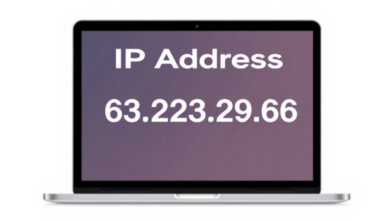Test Automation Frameworks: Selecting the Right Approach for Your Project

Test automation has become an integral part of mobile application development, helping developers accelerate their testing processes. With test automation, your organization can boost efficiency and make apps responsive. However, the success of test automation hinges on the right framework.
A test automation framework is a set of guidelines, coding standards, and best practices that offer an organized structure for developing and executing automated tests. Selecting the appropriate framework for mobile automation testing can contribute to smarter testing. Listed are some considerations for selecting the right approach for mobile automation testing.
What is a Test Automation Framework?
A test automation framework is also known as scaffolding. It acts as a scaffolding to provide the execution environment for the automation test scripts. The main objective of the test automation framework is to allow the developer to create, execute, and report on the automation test scripts efficiently.
Typically, these frameworks comprise guidelines, coding standards, test data injections, etc. Developers can benefit from a test automation framework because they can follow the standards while automating the application. These frameworks offer an abstraction layer that allows the testers to focus on writing test cases without worrying about the technical complexities.
The Common Types of Test Automation Frameworks
Here are the common types of test automation frameworks to know.
Modular testing framework
The modular testing framework assimilates the test automation into smaller and independent modules. Each module focuses on analyzing a particular mobile app feature. It is a kind of approach that enhances the reusability and maintainability of the app. You can leverage this framework for medium-sized projects that demand scalability.
Data-Driven Testing Framework
As the name suggests, the data-driven testing framework separates the test data from the test scripts. It allows testers to execute the same test script with multiple datasets. One of the key highlights of this framework is its ability to reduce script duplication. If you have a project with a wide range of test inputs and configurations, data-driven frameworks are ideal.
Linear Scripting Framework
It is one of the simplest forms of test automation, where the test scripts are written sequentially in the same order. However, it lacks flexibility and reusability, which makes it suitable for small-sized app development projects. Moreover, this framework is suitable for beginners to get started with test automation.
Hybrid Testing Framework
The hybrid testing framework is the combination of two or more frameworks. It leverages the strengths of multiple frameworks to sort out the specific project requirements effectively. If you want flexibility and scalability in a framework, don’t look beyond this framework.
How to Choose a Test Automation Framework for Your Needs?
To select the right test automation framework for your project, consider the following factors.
Identify the Project Requirements
To select the right framework, you must be aware of the needs of the project. It basically implies that the testing framework should focus on sorting out specific issues. For instance, it is crucial to consider the system type, software level testing, and test coverage, among other requirements for web automation testing.
If you are automating the user interface testing of a mobile app, here are the requirements you must know.
- Cross-browser testing
- Fast execution
- Continuous integration
- Regression scope and its full coverage
The Size and Scope of the Project
The scope and size of the test automation project play a crucial role in determining the selection of the appropriate framework. For smaller projects with limited automation requirements, a linear scripting framework is suitable. On the other hand, larger and more complex projects demand a modular or hybrid framework to ensure scalability.
The Complexity of the Test Case
The complexity of the test cases is an important factor to consider when choosing a test automation framework. The level of complexity in your test cases can significantly impact the efficiency and effectiveness of the selected framework.
Some test cases might show dependencies on the particular app states or data, which may need a teardown. The framework must be able to handle these dependencies.
Consider the Tech Stack
The tool should support the programming languages used on the project along with the operating systems your testers are comfortable with. If you are working with mobile applications, it is crucial to consider the supported platforms.
Selecting a tool that supports both iOS and Android can be an ideal option. Selenium is one of the common automation testing frameworks used for testing Android and iOS applications. For programming languages, be aware of the modern trends in automation. Most projects nowadays use JavaScript for different types of testing.
Setting a Budget for Test Automation
It is essential to establish a budget for test automation. Decide whether you will pay for a test automation framework, or you will use free and open-source tools supported by the community of testers. The open-source tools are free to use and dependent on community support for maintenance. These tools are ever-evolving, and you can receive great assistance from the community of testers. On the contrary, commercial tools offer a lot of features. However, they can be costly and stretch your budget. You can access the tutorials but at an additional cost.
Learning Curve
Consider the framework’s complexity and the learning curve of your team. Selecting a simple and well-documented framework can expedite the overall adoption process. Undoubtedly, test automation frameworks are indispensable tools to fine-tune the app testing process. Moreover, with these frameworks, you can achieve faster release cycles without sacrificing app responsiveness and quality.
Always remember that the framework selection process mustn’t be rushed. Take time to explore and experiment based on the stated factors and frameworks.
You Might Also Like:




